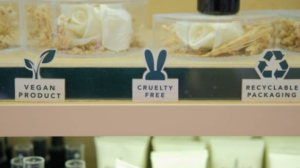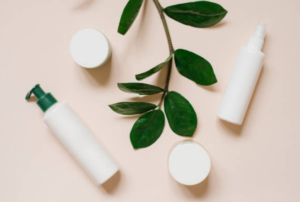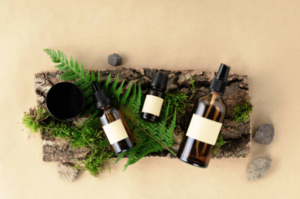Navigating the Complex Beauty Landscape

In recent years, there has been a growing movement towards ethical and sustainable beauty practices. As consumers become more conscious of the ingredients in their skincare and makeup products, they are also paying closer attention to the ethical implications of their beauty choices. Two terms that often come up in discussions of ethical beauty are “cruelty-free” and “vegan.” While these terms are sometimes used interchangeably, they actually represent different aspects of ethical beauty practices.
Being cruelty-free means that a product and its ingredients were not tested on animals at any stage of production, from formulation to final product. On the other hand, being vegan means that a product does not contain any animal-derived ingredients or by-products. While it’s possible for a product to be both cruelty-free and vegan, there are also products that are cruelty-free but not vegan, and vice versa.
Navigating the complex beauty landscape can be challenging, especially when trying to decipher which products align with your ethical values. In this comprehensive guide, we’ll explore the differences between cruelty-free and vegan beauty, unpack the complexities of the beauty industry, and provide tips for making informed and ethical beauty choices.
Understanding Cruelty-Free Beauty
The concept of cruelty-free beauty is centered around the idea of compassion towards animals. It seeks to eliminate the use of animals in cosmetic testing, which can involve subjecting animals to painful and unnecessary experiments to assess the safety and efficacy of beauty products. Common tests include skin irritation tests, eye irritation tests, and lethal dose tests, among others.
Thankfully, there has been significant progress in recent years towards ending animal testing in the beauty industry. Many countries, including the European Union, Australia, and parts of the United States, have implemented bans or restrictions on cosmetic animal testing. Additionally, there are several cruelty-free certification programs and organizations, such as Leaping Bunny and PETA’s Beauty Without Bunnies program, that verify and endorse cruelty-free brands and products.
Choosing cruelty-free beauty products not only supports ethical and humane practices but also encourages companies to invest in alternative testing methods that are more accurate, reliable, and humane. It sends a powerful message to the beauty industry that consumers prioritize animal welfare and are committed to making compassionate choices.

Exploring Vegan Beauty
While cruelty-free beauty focuses on eliminating animal testing, vegan beauty takes it a step further by excluding animal-derived ingredients or by-products from formulations. This includes ingredients such as beeswax, lanolin, carmine (a red pigment derived from insects), and collagen (often sourced from animal bones or skin).
For individuals who follow a vegan lifestyle or have ethical concerns about animal exploitation, choosing vegan beauty products is a way to align their beauty routine with their values. Vegan beauty not only avoids contributing to animal suffering but also promotes sustainability and environmental responsibility by reducing the demand for animal-derived ingredients.
Fortunately, the demand for vegan beauty products has led to a proliferation of options in the market, ranging from skincare to makeup to hair care. Many brands now proudly label their products as vegan-friendly, making it easier for consumers to identify and choose products that align with their values.
Navigating the Grey Areas
1. Mandatory Animal Testing: In some regions, such as China, cosmetic products are required by law to undergo animal testing before they can be sold to consumers. This presents a significant ethical dilemma for brands that claim to be cruelty-free but choose to enter markets where animal testing is mandatory. While these brands may not conduct animal testing themselves, their decision to sell in regions with such requirements indirectly contributes to the suffering of animals.
2. Ingredient Sourcing: While a product may be cruelty-free and vegan, the sourcing of its ingredients can raise ethical concerns. For example, certain plant-derived ingredients, such as palm oil, may be linked to deforestation, habitat destruction, and the displacement of indigenous communities. Even though these ingredients are technically vegan, their production can have negative environmental and social impacts, highlighting the importance of considering the broader context of ingredient sourcing.
3. Greenwashing: Greenwashing occurs when brands misleadingly market their products as environmentally friendly or ethical, despite engaging in practices that contradict these claims. In the beauty industry, this can manifest as brands using buzzwords like “natural,” “eco-friendly,” or “sustainable” without providing substantive evidence to support these claims. Consumers must be vigilant and critically evaluate brands’ claims to ensure they are making genuine efforts towards ethical and sustainable practices.
4. Lack of Regulation: Unlike terms like “organic” or “certified cruelty-free,” there is no universally accepted definition or standard for what constitutes a vegan product in the beauty industry. This lack of regulation can lead to confusion among consumers and allow brands to use the term “vegan” in a way that may not align with their expectations. As a result, consumers must research brands and products thoroughly to ensure they meet their ethical criteria.
5. Ethical Supply Chains: Beyond animal testing and ingredient sourcing, ethical considerations extend to the entire supply chain, including manufacturing, labor practices, and packaging. Brands that prioritize ethical supply chains ensure fair wages and working conditions for employees, minimize environmental impact through sustainable manufacturing processes, and use eco-friendly packaging materials. While these factors may not be directly related to animal testing or veganism, they contribute to a brand’s overall commitment to ethical and responsible practices.
In navigating these grey areas, consumers must critically evaluate brands’ claims and actions, asking questions, and seeking transparency. Supporting brands that prioritize ethical and sustainable practices sends a powerful message to the beauty industry and encourages positive change towards a more compassionate and responsible future.

Making Informed Beauty Choices
Despite the complexities of the beauty industry, there are steps you can take to make informed and ethical beauty choices:
- Research Brands and Their Practices:
Take the time to research brands thoroughly before making a purchase. Visit their websites and read about their animal testing policies, ingredient sourcing practices, and commitment to ethical and sustainable values.
Look for brands that are transparent about their manufacturing processes, including where and how their products are made. Ethical brands will often provide detailed information about their supply chain and production methods to demonstrate their commitment to transparency.
- Check for Certifications and Accreditations:
Look for certifications and accreditations from reputable organizations that verify a brand’s commitment to cruelty-free and vegan practices. Leaping Bunny and PETA’s Beauty Without Bunnies program are two widely recognized certifications for cruelty-free products.
Additionally, certifications like the Vegan Society’s Vegan Trademark indicate that a product is free from animal-derived ingredients and has not been tested on animals. These certifications provide peace of mind and assurance that a brand is adhering to strict ethical standards.
- Read Labels and Ingredient Lists:
Familiarize yourself with common animal-derived ingredients to watch out for, such as beeswax, lanolin, carmine, and collagen. These ingredients may be hidden in product formulations under different names, so it’s essential to read labels and ingredient lists carefully.
Look for products labeled as “vegan,” “plant-based,” or “cruelty-free” to ensure they align with your ethical preferences. Many brands now prominently display these labels on their packaging to make it easier for consumers to identify ethical products.
- Seek Out Transparent Brands:
Support brands that prioritize transparency and accountability in their business practices. Look for brands that openly communicate about their ingredient sourcing, manufacturing processes, and environmental initiatives.
Brands that are committed to transparency will often provide detailed information on their websites, including their stance on animal testing, the origin of their ingredients, and their efforts to minimize their environmental impact. Choose to support brands that share your values and demonstrate a genuine commitment to ethical and sustainable practices.
- Engage with the Beauty Community:
Join online forums, social media groups, and communities dedicated to ethical and sustainable beauty. Engage with like-minded individuals to share tips, recommendations, and experiences with cruelty-free and vegan products.
By connecting with the beauty community, you can stay informed about the latest trends, brands, and initiatives in ethical beauty. You can also learn from others’ experiences and benefit from their insights and knowledge.
- Support Small and Independent Brands:
Consider supporting small and independent brands that prioritize ethical and sustainable practices. These brands often have more flexibility to adapt their practices and are more responsive to consumer feedback and concerns.
Small and independent brands may also be more transparent about their sourcing and production methods, allowing you to make more informed purchasing decisions. By supporting these brands, you can contribute to a more diverse and ethical beauty landscape.
- Educate Yourself Continuously:
Stay informed about developments in the beauty industry, including changes in regulations, advancements in alternative testing methods, and emerging trends in ethical and sustainable beauty.

Educate yourself about the various issues surrounding animal testing, ingredient sourcing, and environmental impact in the beauty industry. By staying informed, you can make more conscious choices and advocate for positive change within the industry.
In a world where ethical and sustainable practices are increasingly valued, navigating the beauty landscape requires a thoughtful and informed approach. By understanding the differences between cruelty-free and vegan beauty, as well as the complexities of the industry, you can make choices that align with your values and support a more compassionate and sustainable future. Remember, every purchase you make is a vote for the kind of world you want to live in – so choose wisely, and let your beauty shine, cruelty-free and vegan.

